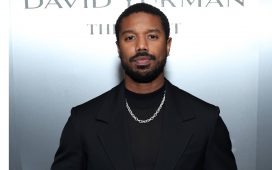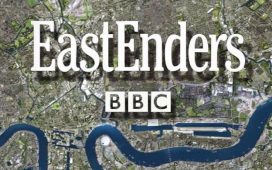The experience of watching a show based on a book or books is always slightly different depending on whether you have read the book or not. If you have not read the book, you can just watch the show and enjoy the story that is unfolding (or stop watching if you’re not enjoying it). If you have read the book, however, you will inevitably spend your first viewing working out how the adaptation has changed or remained faithful to the source material. This does not necessarily mean that the adaptation is bad or ineffective; it means that because it is not what you are expecting, it can sometimes take a second viewing, or a day or two of thinking about it, to get yourself used to this new version of events.
The developing story around the Three Elven Rings here, especially in the first episode, very much falls under this category. The timeline, the order in which the various Rings are forged, and most importantly the nature and meaning of the Three Elven Rings have all been changed, and that will take a minute for book readers to get their heads around.
In Tolkien’s legendarium, the 16 Rings of Power given to Dwarves and Men are forged first, by both Sauron (in disguise as Annatar, the Lord of Gifts) and Celebrimbor working together. Gil-galad does not trust Sauron/Annatar, and nor does Galadriel, but Celebrimbor is taken in. The Three Elven Rings are created later and Sauron has nothing to do with their creation; they are designed specifically to be something untouched by Sauron. However, last of all, Sauron forges the One Ring by himself in Orodruin (Mount Doom), and although he did not help to make the Elven Rings, the One Ring is so powerful that it still has power over them.
In the show’s story, the Three Elven Rings are created first, by Celebrimbor but with help from Sauron (disguised as Halbrand). Because of that, when Galadriel reveals Halbrand’s true identity to Gil-galad and Elrond, they become suspicious of the Rings and have far more concern about them and reluctance to use them than in the books. Gil-galad and the third initial Ringbearer, Círdan the Shipwright (Ben Daniels), are won over, but Elrond takes longer. His desire to destroy the Rings all together seems designed to tie into his role in The Lord of the Rings.
Over the course of these three episodes, we can see how the show’s story will come together to match Tolkien’s more closely over time. Much of the way the show treats the Elven Rings has to do with foreshadowing events from much later in The Lord of the Rings, especially the fading of Elvendom following the destruction of the One Ring. Here, they are intended to stop a fading that is already happening, and their Bearers are much more conflicted about their use than they seem to be in Tolkien’s books, at least at this stage.
Meanwhile, Galadriel’s hesitation in telling Celebrimbor about Halbrand’s true identity looks like it will have serious consequences now that we finally get to see Sauron appear as Annatar. Halbrand’s transformation is a gorgeous and powerful scene that clearly leaves its mark on Celebrimbor, who lines up with his book counterpart, being totally taken in by Sauron. The murder of Gil-galad’s messengers who are meant to warn Celebrimbor of Sauron’s manipulations sets up some classic dramatic tension, as we must now watch Celebrimbor put all his trust in Annatar, knowing that he is actually being deceived by Sauron.












